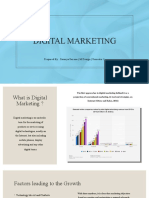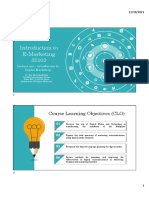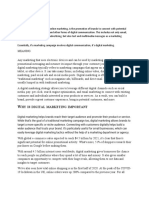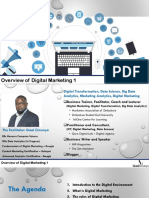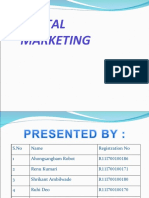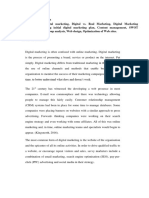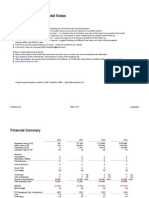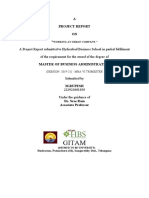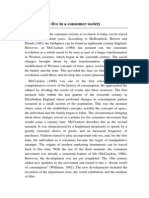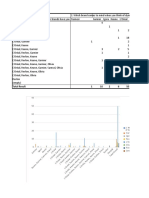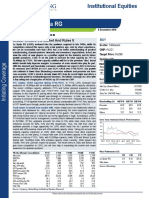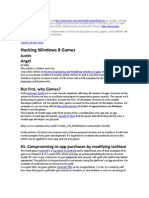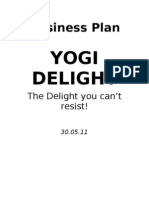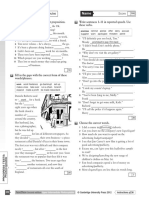0% found this document useful (0 votes)
54 views42 pagesChapter 1 Introduction To Digital Marketing
Digital marketing encompasses various audience interactions through digital devices, platforms, media, data, and technologies, integrating traditional marketing methods to achieve objectives. Key components include paid, owned, and earned media, with strategies focusing on customer engagement and leveraging digital channels throughout the purchase cycle. The RACE framework outlines steps for building brand awareness, engaging customers, converting leads, and fostering long-term relationships.
Uploaded by
MuhammadCopyright
© © All Rights Reserved
We take content rights seriously. If you suspect this is your content, claim it here.
Available Formats
Download as PPTX, PDF, TXT or read online on Scribd
0% found this document useful (0 votes)
54 views42 pagesChapter 1 Introduction To Digital Marketing
Digital marketing encompasses various audience interactions through digital devices, platforms, media, data, and technologies, integrating traditional marketing methods to achieve objectives. Key components include paid, owned, and earned media, with strategies focusing on customer engagement and leveraging digital channels throughout the purchase cycle. The RACE framework outlines steps for building brand awareness, engaging customers, converting leads, and fostering long-term relationships.
Uploaded by
MuhammadCopyright
© © All Rights Reserved
We take content rights seriously. If you suspect this is your content, claim it here.
Available Formats
Download as PPTX, PDF, TXT or read online on Scribd
/ 42

















